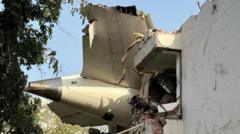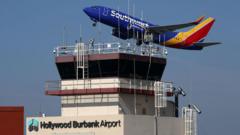The FAA's assurance comes after the release of a troubling preliminary report by India's Aircraft Accident Investigation Branch (AAIB). This report outlined that the fuel to the engines of a Boeing 787-8 Dreamliner was switched off shortly after takeoff from Ahmedabad, fueling fears over the switches' safety. The Flight 171, which was en route to London, met a catastrophic end moments after departing, marking it as one of the most severe aviation disasters in nearly a decade.
According to the AAIB's findings, the switches controlling fuel flow transitioned from "run" to "cut-off," crucially affecting the jet's engine thrust. The report noted that the FAA had previously recommended inspections of the locking feature on these switches to avert accidental disengagement, an action that was not taken by Air India, as per the AAIB's report.
Despite concerns, the FAA has communicated that while the design of the fuel control switch and its locking feature are similar across Boeing models, they do not consider this an unsafe condition warranting any airworthiness directives, including for the 787 model. The authority stated its advisory back in 2018, which was based on reports about the switches being improperly locked, was only a recommendation—not a requirement.
The tragic incident saw the plane crash into a medical college shortly after takeoff, with only one British individual surviving the ordeal. Investigators have stated they will release a comprehensive report within the next year, while the cockpit recordings captured a perplexing exchange between the pilots regarding the fuel cutoff.
As the investigation continues, the aviation community watches closely, balancing safety concerns with operational protocols.
According to the AAIB's findings, the switches controlling fuel flow transitioned from "run" to "cut-off," crucially affecting the jet's engine thrust. The report noted that the FAA had previously recommended inspections of the locking feature on these switches to avert accidental disengagement, an action that was not taken by Air India, as per the AAIB's report.
Despite concerns, the FAA has communicated that while the design of the fuel control switch and its locking feature are similar across Boeing models, they do not consider this an unsafe condition warranting any airworthiness directives, including for the 787 model. The authority stated its advisory back in 2018, which was based on reports about the switches being improperly locked, was only a recommendation—not a requirement.
The tragic incident saw the plane crash into a medical college shortly after takeoff, with only one British individual surviving the ordeal. Investigators have stated they will release a comprehensive report within the next year, while the cockpit recordings captured a perplexing exchange between the pilots regarding the fuel cutoff.
As the investigation continues, the aviation community watches closely, balancing safety concerns with operational protocols.























